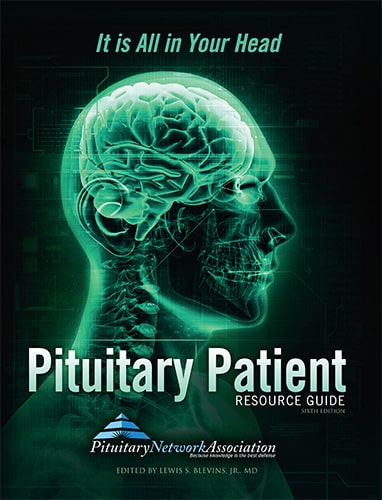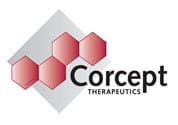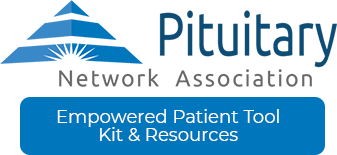News Articles February 2022
Written on 04 February 2022.
PNA Spotlight: Dr. Kevin Lillehei
 This month the PNA Spotlight focuses on Dr. Kevin Lillehei, Chair of Neurosurgery at University of Colorado Health Sciences Center and Medicine, where he directs the Pituitary Tumor Division and the Surgical Neuro-oncology Fellowship. He is also a member of the PNA Scientific Advisory Board. Dr. Lillehei earned his B.S. at Cornell University in New York, and his medical degree at the University of Minnesota. He did an internship and his residency at the University of Michigan Hospitals and Health Centers Program. He was kind enough to answer a few questions from the PNA. His answers follow.
This month the PNA Spotlight focuses on Dr. Kevin Lillehei, Chair of Neurosurgery at University of Colorado Health Sciences Center and Medicine, where he directs the Pituitary Tumor Division and the Surgical Neuro-oncology Fellowship. He is also a member of the PNA Scientific Advisory Board. Dr. Lillehei earned his B.S. at Cornell University in New York, and his medical degree at the University of Minnesota. He did an internship and his residency at the University of Michigan Hospitals and Health Centers Program. He was kind enough to answer a few questions from the PNA. His answers follow.
• What inspired you to choose your career path?
During residency I had a terrific neurosurgery mentor and role model who introduced me to the treatment of patients with pituitary tumors. Following graduation, I was fortunate to partner with an incredible group of endocrinologists at the University of Colorado who allowed me to continue my interest in the neurosurgical treatment of patients with pituitary tumors.
• What is the primary focus of your work/research?
Currently I am Chair of the Department of Neurosurgery at the University of Colorado Health Sciences Center, Director of the Pituitary Tumor Division and Director of the Surgical Neuro-oncology Fellowship. As indicated from above, my passion lies in the treatment of patients with brain and spinal cord tumors, both benign and malignant. In malignant tumors of the brain, our clinical and research work has centered on novel uses of immunotherapy for treatment of high- grade gliomas. In addition, we are invested in improving the extent of resection of these tumors, with minimizing morbidity. We currently have a research glioma tumor bank of over 1,300 specimens. For pituitary tumors, we have had a particular clinical and research interest in patients with acromegaly and Cushing’s disease. This is a group of patients that, in particular, require a multi-disciplinary team approach to treatment, and we have been fortunate to have assembled such a team in Colorado. Currently I have personally done over 2,500 transsphenoidal procedures, working closely with our endocrinology associates. Our pituitary tumor research bank currently holds 724 specimens.
• What do you consider to be the future of your field?
In the treatment of pituitary tumors, I feel the future of our field lies ultimately in our ability to manage these lesions medically, without surgical intervention, as we currently do with prolactinomas. The future of our field also lies in being able to recognize these lesions earlier and provide treatment before the development of neurologic and/or endocrinologic dysfunction.
• What should patients know about your field/what deserves more recognition/awareness?
I think the single most important message is that in pursuing treatment for pituitary tumors, patients should seek out centers with experience and, in particular, centers that possess a team centered approach to treatment. These centers should consist of dedicated surgeons, endocrinologists, neuro-pathologists, neuro-radiologists and ophthalmologist working closely together.
• What would you like to convey about yourself to your patients?
Treatment of pituitary tumors is unique to each individual and I approach each patient in this manner. Treatment of these lesions has been a life-long passion of mine and we always strive to do the best job we can for each individual.
• Why did you get involved with the PNA; what is the extent of your involvement?
Treatment of patients with pituitary region tumors has been a large part of my practice for over 30 years. During this time, I have strived to always offer the best care possible, whether surgical, medical or a combination of both. Over the years, I have worked closely with the PNA and know first-hand that this is their goal as well. With like-minded visions, I am honored to be a member of PNA’s Medical Advisory Board and to work towards this common goal.
August 2023 Research Articles
Pituitary Tumors
Natural History of Non-Functioning Pituitary Adenomas: A Systematic Review and Meta-Analysis.
Joint pain, physical function, and balance self-confidence in acromegaly versus non-functioning pituitary adenoma patients.
Non-coding RNAs and exosomal non-coding RNAs in pituitary adenoma.
Craniopharyngioma in Pediatrics and Adults.
Benign and Malignant Tumors of the Pituitary Gland.
Identification of a Novel SSTR3 Full Agonist for the Treatment of Nonfunctioning Pituitary Adenomas.
Health-related quality of life analyses in nonfunctioning pituitary macroadenoma patients identifies at-risk populations.
Pituitary Surgery
Surgical Treatment of Prolactinomas: Potential Role as a First-Line Treatment Modality.
Predicting visual recovery in pituitary adenoma patients post-endoscopic endonasal transsphenoidal surgery: Harnessing delta-radiomics of the optic chiasm from MRI.
Exploring endocrinological pitfalls in pituitary surgery in the elderly.
The efficacy of a visiting surgical service versus that of a hospital-based surgical service in providing endoscopic endonasal surgery to remove nonfunctioning pituitary adenomas in rural communities.
Acromegaly
Incidence and risk factors of cancers in acromegaly: a Chinese single-center retrospective study.
A cohort study found a high risk of end-stage kidney disease associated with acromegaly.
A worldwide bibliometric analysis of acromegaly in the past two decades: 1999-2022..
Real World Data on the Epidemiology, Diagnosis, and Treatment of Acromegaly: A Registries-based Approach.
Cushing’s Disease
Risk of impulse control disorders in patients with Cushing’s disease: do not blame cabergoline but do not give up caution.
Radio Therapy
The impact of radiotherapy on the hypothalamo-pituitary axis, old vs. new radiotherapy techniques.
Radiotherapy for rare primary brain tumors.
MEN-1
Cutaneous lesions and other non-endocrine manifestations of Multiple Endocrine Neoplasia type 1 syndrome.
Neuroendocrine tumors in a patient with multiple endocrine neoplasia type 1 syndrome: A case report and review of the literature.
Hypopituitarism
Metastatic diffuse follicular variant papillary thyroid cancer without cervical lymph node metastasis presenting with symptoms related to hypopituitarism.
Pituitary Apoplexy
Infarctive Apoplexy of Previously Healthy Pituitary Glands: A Small Case Series and Literature Review.
Pituitary Adenoma With Apoplexy Presenting As Unilateral Third Nerve Palsy.
Pituitary Dyslpasia
Neuroimaging features in children with optic nerve hypoplasia and septo-optic-pituitary dysplasia.
News Articles August 2023
Extreme Weight Gain Leads to Cushing’s Diagnosis
An article in the Daily Mail follows the story of a 35-year-old woman from the U.K. whose weight rose sharply over a few years, which led to a diagnosis of Cushing’s Disease. Read more:
IGF-1 May Be Linked to Bone Health in Cushing’s Patients
An article in Cushing’s Disease News looks at a study that found low IGF-1 levels was associated with low bone density in younger Cushing’s patients, ages 13-49. Read more:
Eye Exam, Excessive Thirst Leads to Diagnosis of Pituitary Tumor
An article in MedicalDaily.com tells the story of a 41-year old man in the U.K. who drank ten liters of water a day for two years – but tested negative for diabetes. Finally, after an eye exam showed abnormalities, he was diagnosed with a germ-cell tumor on his pituitary gland. Read more:
When A Pituitary Tumor Masquerades as Glaucoma
A study out of Florida looks at cases where pituitary brain tumors can be mistaken for glaucoma if the optic disc features “cupping”. Read more:
PNA Medical Corner: Pituitary Adenoma and Stereotactic Radiosurgery
 This month the PNA Medical Corner showcases an article in the journal Neurosurgery co-authored by neurosurgeon Dr. Jason Sheehan at the University of Virginia Charlottesville, which looks at Nonfunctional Pituitary Adenoma Treated with Stereotactic Radiosurgery..
This month the PNA Medical Corner showcases an article in the journal Neurosurgery co-authored by neurosurgeon Dr. Jason Sheehan at the University of Virginia Charlottesville, which looks at Nonfunctional Pituitary Adenoma Treated with Stereotactic Radiosurgery..
Volumetric Assessment of Nonfunctional Pituitary Adenoma Treated With Stereotactic Radiosurgery: An Assessment of Long-Term Response
• PMID: 37437306 DOI: 10.1227/neu.0000000000002594
Abstract
Background and objectives: Stereotactic radiosurgery (SRS) is widely used to manage recurrent or residual nonfunctioning pituitary adenomas (NFPAs). Studies on the long-term volumetric response of NFPAs to SRS are lacking. Such a post-SRS volumetric study will allow us to set up appropriate radiographic follow-up protocols and predict tumor volumetric response.
Methods: Two providers independently performed volumetric analyses on 54 patients who underwent single-session SRS for a recurrent/residual NFPA. In the case of discrepancy between their results, the final volume was confirmed by an independent third provider. Volumetry was performed on the 1-, 3-, 5-, 7-, and 10-year follow-up neuroimaging studies.
Results: Most patients showed a favorable volumetric response, with 87% (47/54) showing tumor regression and 13% (7/54) showing tumor stability at 10 years. Year 3 post-SRS volumetric results correlated (R2 = 0.82, 0.63, 0.56) with 5-, 7-, and 10-year outcomes. The mean interval volumetric reduction was 17% on year 1; further interval volumetric reduction was 17%, 9%, 4%, and 9% on years 3, 5, 7, and 10, respectively.
Conclusion: Year 3 post-SRS volumetric response of patients with residual or recurrent NFPAs is predictive of their 7-10-year follow-up response. For patients demonstrating NFPA regression in the first 1-3 years, interval follow-up MRI’s can likely be performed at 2-year periods unless otherwise clinically indicated. Further studies are needed to better define the volumetric response to adenomas more than a decade after SRS.
Copyright © Congress of Neurological Surgeons 2023. All rights reserved.
PNA Highlights July 2023

True health infuses positive energy in the mind, body and spirit; it is a main focus in my life.
-Maximillian Degenerez
PNA Spotlight: Dr. Bernard Bendok
 In July, the PNA Spotlight focuses on Dr. Bernard Bendok, a neurosurgeon at the Mayo Clinic in Scottsdale, Arizona. Dr. Bendok earned his M.D. at Northwestern University, Feinberg School of Medicine. He also was an intern and a Resident there. He board certified in Neurological Surgery and specialized in minimally invasive neurosurgery. His PNA directory listing is here. He was kind enough to answer a series of questions from the PNA. His answers follow:
In July, the PNA Spotlight focuses on Dr. Bernard Bendok, a neurosurgeon at the Mayo Clinic in Scottsdale, Arizona. Dr. Bendok earned his M.D. at Northwestern University, Feinberg School of Medicine. He also was an intern and a Resident there. He board certified in Neurological Surgery and specialized in minimally invasive neurosurgery. His PNA directory listing is here. He was kind enough to answer a series of questions from the PNA. His answers follow:
PNA Medical Corner: The Endoscopic Endonasal Transtuberculum Approach
 This month the PNA Medical Corner features an article co-authored by Juan C Fernandez-Miranda at Stanford University, a member of the PNA. The article looks at what is necessary for a successful resection of a pediatric tuberoinfundibular craniopharyngioma using the endoscopic endonasal transtuberculum approach.
This month the PNA Medical Corner features an article co-authored by Juan C Fernandez-Miranda at Stanford University, a member of the PNA. The article looks at what is necessary for a successful resection of a pediatric tuberoinfundibular craniopharyngioma using the endoscopic endonasal transtuberculum approach.
Copyright © 2024 Pituitary Network Association All rights reserved.
Disclaimer: PNA does not engage in the practice of medicine. It is not a medical authority, nor does it claim to have medical expertise. In all cases, PNA recommends that you consult your own physician regarding any course of treatment or medication.
Our mailing address is:
Pituitary Network Association
P.O. Box 1958
Thousand Oaks, CA 91358
(805) 499-9973 Phone - (805) 480-0633 Fax
Email info@pituitary.org
You are receiving this Newsletter because you have shown interest in receiving information about our activities.
If you do not want to receive any more emails from PNA, Unsubscribe.
News Articles July 2023
When is “Too Short” a Medical Issue?
An article in Romper looks at parents’ reaction to their child’s small stature and explains what qualifies as official “short stature” and what to do if you suspect a medical cause. Read more:
Study: Annual Re-scans Not Necessary for Nonfunctioning Pituitary Microadenoma
An article in World Time Todays looks at a study done of 419 patients with nonfunctioning pituitary microadenoma in the U-K and published in the European Journal of Endocrinology. They conclude that yearly scans are not necessary for this type of common benign brain tumor. Read more:
Community Rallies Around 8-year-old Girl with Pituitary Cancer
An 8-year-old Alabama girl named Josie Vickers is fighting pituitary cancer. And her community is rallying behind her. Read more:
Endo 2023: A Look at the Research Presented
Healio has an article and link to a video of John Carmichael, MD from USC, going over some of the findings presented at ENDO 2023, which recently wrapped up in Chicago, IL. Watch video here:
PNA Medical Corner: The Endoscopic Endonasal Transtuberculum Approach
 This month the PNA Medical Corner features an article co-authored by Juan C Fernandez-Miranda at Stanford University, a member of the PNA. The article looks at what is necessary for a successful resection of a pediatric tuberoinfundibular craniopharyngioma using the endoscopic endonasal transtuberculum approach.
This month the PNA Medical Corner features an article co-authored by Juan C Fernandez-Miranda at Stanford University, a member of the PNA. The article looks at what is necessary for a successful resection of a pediatric tuberoinfundibular craniopharyngioma using the endoscopic endonasal transtuberculum approach.
Endoscopic Endonasal Transtuberculum Approach for Pediatric Tuberoinfundibular Craniopharyngioma: 2-Dimensional Operative Video
• PMID: 37350589 DOI: 10.1227/ons.0000000000000726
Abstract
Indications corridor and limits of exposure: The endoscopic endonasal transtuberculum approach grants access to suprasellar and retrochiasmatic lesions with hypothalamic involvement. Here, we present a case of a 13-year-old boy with a history of stunted growth, decreased vision, headaches, and low energy with a tuberoinfundibular craniopharyngioma. The patient consented to the procedure.
Anatomic essentials need for preoperative planning and assessment: Evaluation of the sphenoid sinus pneumatization, internal carotid artery disposition, presence of clinoidal rings, variations of the infrachiasmatic corridor (optic chiasm location, height of dorsum sella), and location of the pituitary stalk are crucial for surgical strategy.
Essentials steps of the procedure: Harvesting of nasoseptal flap and access to the sphenoid sinus; drilling the sella, tuberculum, and chiasmatic sulcus up to the limbus sphenoidalis and laterally exposing the clinoidal carotid artery segment; wide dural opening to the level of distal rings inferolaterally and falciform ligaments superolaterally; identification and coagulation of superior hypophyseal branches providing tumor supply; intracapsular dissection and debulking and subpial sharp dissection at the hypothalamic tumor interface to achieve complete removal; and reconstruction with inlay collagen, fascia lata, and nasoseptal flap.
Pitfalls/avoidance of complications: Preservation of the superior hypophyseal arteries and stalk is essential for preventing pituitary dysfunction. Preoperative reckoning of hypothalamic invasion and identification of adequate interface aids in avoiding complications. To reduce CSF leak risk, multilayer reconstruction was performed and lumbar drain placed postoperatively.
Variants and indications for their use: For retroclival extension, intradural pituitary transposition should be considered to expand the corridor; in patients with preoperative hypopituitarism, pituitary sacrifice is most effective to increase retroclival access.
PNA Spotlight: Dr. Bernard R. Bendok
 In July, the PNA Spotlight focuses on Dr. Bernard Bendok, a neurosurgeon at the Mayo Clinic in Scottsdale, Arizona. Dr. Bendok earned his M.D. at Northwestern University, Feinberg School of Medicine. He also was an intern and a Resident there. He board certified in Neurological Surgery and specialized in minimally invasive neurosurgery. His PNA directory listing is here. He was kind enough to answer a series of questions from the PNA. His answers follow:
In July, the PNA Spotlight focuses on Dr. Bernard Bendok, a neurosurgeon at the Mayo Clinic in Scottsdale, Arizona. Dr. Bendok earned his M.D. at Northwestern University, Feinberg School of Medicine. He also was an intern and a Resident there. He board certified in Neurological Surgery and specialized in minimally invasive neurosurgery. His PNA directory listing is here. He was kind enough to answer a series of questions from the PNA. His answers follow:
• What inspired you to choose your career path?
In 9th grade I decided to be a doctor after reading about the pituitary gland. I was amazed by how such a small gland could have so much impact on human health and illness. During my undergraduate years I volunteered at a pediatric cancer ward and this experience forever created an impression on me of the power of human empathy and the need to advance the care of patients who suffer from disorders related to the brain and pituitary gland. My love for the anatomy of the nervous system which grew in medical school made me decide that Neurosurgery would be the best way to combine my interests with my life mission to help patients.
• What is the primary focus of your work/research?
My laboratory focuses on three complimentary areas. The first area is anatomic research to enhance surgical planning, decision making, virtual and augmented reality guided surgery, and education, the second is using datascience and artificial intelligence to enhance early disease detection and the third is technology innovation and clinical trials to enhance patient outcomes.
• What do you consider to be the future of your field?
I think that advances in artificial intelligence is going to allow for earlier disease detection which may lead to better outcomes. Advances in intraoperative imaging capabilities and robotics is going to enhance surgical safety and improve outcomes.
• What should patients know about your field/what deserves more recognition/awareness?
I think that patients should seek counsel from experienced centers and pursue second opinions when diagnosed with a pituitary tumor. Its important to note that specialized pituitary imaging may lead to better diagnostic accuracy. Its also important to consider centers where team work between multiple specialities including Neurosurgery, ENT, Ophthalmology, Endocrinology and Neurology is center to the culture.
• What would you like to convey about yourself to your patients?
The pituitary gland is one of the most important structures in the body. I am dedicated with my colleagues to providing exceptional care. I follow the creed of the founders of the Mayo Clinic who stated that “The interest of the patient is the only interest to be considered”.
• Why did you get involved with the PNA; what is the extent of your involvement?
The advocacy and passion the PNA has for patients with pituitary disorders is inspiring and motivates me to do better. The PNA works diligently to connect patients with knowledge and resources for a better life and better outcomes when faced with pituitary disorders.
July 2023 Research Articles
Pituitary Tumors
Two- and three-dimensional endoscopic endonasal surgery of large and giant pituitary adenomas-outcome analysis of a series of 62 patients from a single pituitary center.
Plurihormonal (Tsh-Gh-Prolactin Secreting) Pit-1-Positive Pituitary Macroadenoma/Pituitary Neuroendocrine Tumor (Pitnet) Associated With Graves’ Disease: A Case Report.
Cerebrospinal fluid production rate in various pathological conditions: a preliminary study.
Natural history of non-functioning pituitary microadenomas – results from the UK NFPA consortium.
Post-Operative Medium- and Long-Term Endocrine Outcomes in Patients with Non-Functioning Pituitary Adenomas-Machine Learning Analysis.
Giant Prolactinoma. A Case Report.
Pituitary Surgery
Formation of internal carotid artery aneurysms following gamma knife radiosurgery for pituitary adenomas: a case series and literature review.
Imaging
Portable MRI to assess optic chiasm decompression after endoscopic endonasal resection of sellar and suprasellar lesions.
Cushings
Relevance of inferior petrosal sinus sampling in the diagnosis of Cushing’s syndrome: a case report.
Cushing syndrome caused by an ectopic ACTH-producing pituitary adenoma of the clivus region: A rare case report and literature review.
Gut microbial dysbiosis in patients with Cushing’s disease in long-term remission. Relationship with cardiometabolic risk.
Hormonal Health
HIST1H1E syndrome with deficiency in multiple pituitary hormones.
Estradiol and progesterone regulate NUCB2/nesfatin-1 expression and function in GH3 pituitary cells and THESC endometrial cells.
Ketosis-prone Diabetes and Hypogonadism: A New Clinical Association to be Aware of.
PNA Highlights June 2023

As an American, you have a right to good health care that is effective, accessible, and affordable, that serves you from infancy through old age, that allows you to go to practitioners and facilities of your choosing, and that offers a broad range of therapeutic options.
-Andrew Weil
PNA Spotlight: Dr. John Boockvar
 In June the PNA Spotlight focuses on Dr. John Boockvar, a neurosurgeon in New York City. Dr. Boockvar has many titles; among them, vice chair of the Department of Neurosurgery and director of the Brain Tumor and Pituitary/Neuroendocrine Center at Lenox Hill Hospital; investigator in the Laboratory for Brain Tumor Biology at the Feinstein Institutes for Medical Research; and professor of Neurosurgery and Otolaryngology/Head and Neck Surgery at the Donald and Barbara Zucker School of Medicine at Hofstra/Northwell. He also serves as an adjunct professor at Cold Spring Harbor Laboratory and is head of experimental therapeutics for Northwell Health. Dr. Boockvar received a BA from the University of Pennsylvania and and MD from SUNY Brooklyn-Downstate Medical Center. He did his surgical internship and neurosurgical residency at the Hospital of the University of Pennsylvania. Dr. Boockvar did his NIH-supported postdoctoral research training in neuro-oncology at the University of Pennsylvania Cancer Center. He was kind enough to answer a series of questions from the PNA. His answers follow:
In June the PNA Spotlight focuses on Dr. John Boockvar, a neurosurgeon in New York City. Dr. Boockvar has many titles; among them, vice chair of the Department of Neurosurgery and director of the Brain Tumor and Pituitary/Neuroendocrine Center at Lenox Hill Hospital; investigator in the Laboratory for Brain Tumor Biology at the Feinstein Institutes for Medical Research; and professor of Neurosurgery and Otolaryngology/Head and Neck Surgery at the Donald and Barbara Zucker School of Medicine at Hofstra/Northwell. He also serves as an adjunct professor at Cold Spring Harbor Laboratory and is head of experimental therapeutics for Northwell Health. Dr. Boockvar received a BA from the University of Pennsylvania and and MD from SUNY Brooklyn-Downstate Medical Center. He did his surgical internship and neurosurgical residency at the Hospital of the University of Pennsylvania. Dr. Boockvar did his NIH-supported postdoctoral research training in neuro-oncology at the University of Pennsylvania Cancer Center. He was kind enough to answer a series of questions from the PNA. His answers follow:
PNA Medical Corner: PitNETs
 This month the PNA Medical Corner showcases a study co-authored by longtime PNA member Dr. Sylvia Asa on PitNets that co-express PIT1 and SF1. These types of tumors that express both are rare. Read more here:
This month the PNA Medical Corner showcases a study co-authored by longtime PNA member Dr. Sylvia Asa on PitNets that co-express PIT1 and SF1. These types of tumors that express both are rare. Read more here:
https://pubmed.ncbi.nlm.nih.gov/37268858/
Abstract
PitNETs are usually restricted in their cytodifferentiation to only one of 3 lineages dictated by expression of the pituitary transcription factors (TFs) PIT1, TPIT, or SF1. Tumors that show lineage infidelity and express multiple TFs are rare. We searched the pathology files of 4 institutions for PitNETs with coexpression of PIT1 and SF1. We identified 38 tumors in 21 women and 17 men, average age 53 (range 21-79) years. They represented 1.3 to 2.5% of PitNETs at each center. Acromegaly was the presentation in 26 patients; 2 had central hyperthyroidism associated with growth hormone (GH) excess and one had significantly elevated prolactin (PRL). The remainder had mass lesions with visual deficits, hypopituitarism, and/or headaches. Tumor size ranged from 0.9 to 5 cm; all 7 lesions smaller than 1 cm were associated with acromegaly. Larger lesions frequently invaded the cavernous sinuses.
Copyright © 2024 Pituitary Network Association All rights reserved.
Disclaimer: PNA does not engage in the practice of medicine. It is not a medical authority, nor does it claim to have medical expertise. In all cases, PNA recommends that you consult your own physician regarding any course of treatment or medication.
Our mailing address is:
Pituitary Network Association
P.O. Box 1958
Thousand Oaks, CA 91358
(805) 499-9973 Phone - (805) 480-0633 Fax
Email info@pituitary.org
You are receiving this Newsletter because you have shown interest in receiving information about our activities.
If you do not want to receive any more emails from PNA, Unsubscribe.
Available Now!

The Pituitary Patient Resource Guide Sixth Edition is now available! Be one of the first to have the most up-to-date information. The Pituitary Patient Resource Guide a one of a kind publication intended as an invaluable source of information not only for patients but also their families, physicians, and all health care providers. It contains information on symptoms, proper testing, how to get a diagnosis, and the treatment options that are available. It also includes Pituitary Network Association's patient resource listings for expert medical care.
















